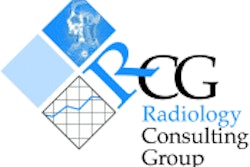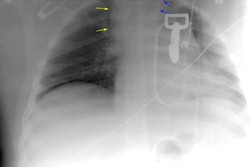Multidetector CT: Principles, Techniques, & Clinical Applications by Elliot K. Fishman and R. Brooke Jeffrey, Jr.
Lippincott Williams & Wilkins, Philadelphia, 2003, $169
This long-awaited, 600-page volume on multidetector CT offers good background on common pathologies and clinical issues, as well as good-to-great quality images.
In the technique section, a clear introduction on multislice CT technology is given, based on the authors' experience with 4-slice systems. Two lavishly illustrated chapters focus on the important role of image processing -- such as volume rendering and virtual endoscopy -- and offer interesting applications.
As expected, 3D images are used extensively, especially in the chapters written by the authors from Johns Hopkins University in Baltimore. The technique section finishes with a perspective on the clinical benefit and impact of multidetector CT.
The chest section starts with a balanced overview of current lung cancer screening protocols. Topics covered include pulmonary embolism (PE), 3D airway imaging and dissection, cardiac CT, and pediatric chest applications. The issue of radiation dose is well addressed in the latter chapter. In comparison, the PE chapter is somewhat disappointing with data from the single-slice era, and new trends only briefly touched upon.
The gastrointestinal section makes up a large part of the book. Common focal and diffuse liver disease, as well as the spleen, is sufficiently detailed in this section. It also includes a special focus chapter on CT colonography.
The section on genitourinary applications contains a thorough overview of pelvic diseases with a chapter devoted to CT urography. Here, the California-based Stanford University contributors offer their take on CTU indications and dose-efficient technique.
Vascular applications have become important in the multidetector era, and the aorta and its branches, as well as renal CT angiography, are well covered. It also includes a chapter on the clinical role of neuro CTA, but does not discuss perfusion or stroke imaging.
The final section is composed of miscellaneous topics: musculoskeletal, body trauma, CT screening. The chapter on pediatric abdominal is out of place and belongs in the GI section.
The book has a few negative points. On a minor note, there are the occasional typographical errors. A bigger issue is the limited coverage of 16-slice systems. For a book published during the year that the industry is already moving to 32-64 slice systems, this is a drawback. An update will be necessary in the near future.
This book by Fishman and Jeffrey has the potential to become a classic and I recommend it without hesitation.
By Dr. Aart J. van der MolenAuntMinnie.com contributing writer
March 13, 2004
Dr. van der Molen is with the department of radiology at the Leiden University Medical Center in the Netherlands. He is a co-author of Spiral and Multislice Computed Tomography of the Body.
The opinions expressed in this review are those of the author, and do not necessarily reflect the views of AuntMinnie.com.
Copyright © 2004 AuntMinnie.com


















